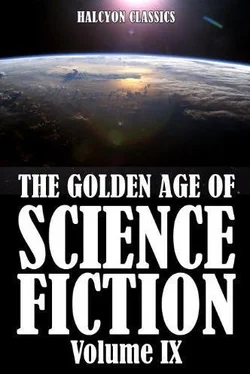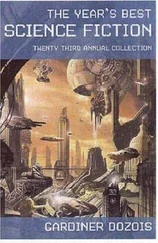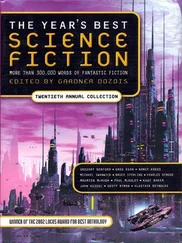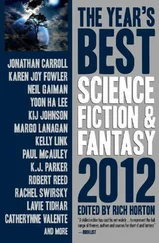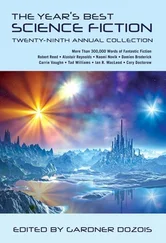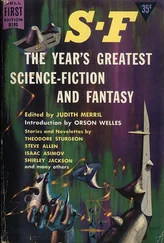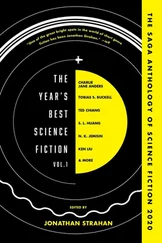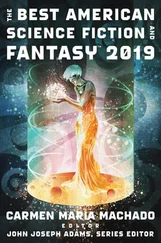I now directed M’Allister to turn the vessel in a north-easterly direction, and we moved across to the last objects which I proposed to examine. One was the large walled plain “Schickard”—about 135 miles in diameter—which encloses several other rings; the other, which lies to the south-east of it and close to the moon’s south-eastern limb, is probably the most unique object on the lunar surface. As we gazed upon it I explained that the formation, which is known as “Wargentin,” would probably in the usual course of events have been a ring-plain about fifty-four miles in diameter, but it really is a high plateau of that size, with very low ramparts. It is evidently a ring-plain which became filled to the brim with lava, or mud, that welled up from the interior of the moon; and the mountain walls, being exceptionally strong and without any breaks or gaps, withstood the enormous pressure of the lava, which therefore solidified and formed the great plateau as we now see it. The low ramparts, which we noticed here and there, are really the isolated peaks and ridges of the mountains forming the walls. This is the only known instance of such a formation; but probably others would exist had not the walls of the rings given way under the pressure of the lava. The walls of several ring-plains have been quite carried away, and, in some cases so obliterated, that it is now difficult to make out the original shape of the rings.
Having taken a last look at this unique object, I directed M’Allister to set the machinery in motion and rise for the purpose of quitting the moon.
“But,” interposed John, “are you not going to have a look at the back of the moon, Professor?”
“No, John,” I answered, “only a small portion of it is now in the sunlight, the rest is in the blackest darkness, so we should not be likely to learn much more about it than we know at present.”
“Do you think the moon is inhabited?” he then asked.
“No, I do not think it is; no sign of life has ever been discovered, and we have seen nothing to indicate its existence here. The prevailing conditions seem to preclude the possibility. Think, John, if there is any life, what must it be! Without any atmosphere—therefore, not a sound to be heard, for all would ever be in the most deathly silence—no breath of wind; never a cloud nor a drop of refreshing rain, nor even dew; intense heat in the sunlight and the most intense cold everywhere in the shade! If any life does exist, it is most probably down in those gloomy, dark and cold recesses at the bottom of the ring-mountains, where there may possibly be some remains of an atmosphere. It would, however, be life in such a dreadful and debased form that I would rather not think about it at all.
“For a somewhat similar reason, I have directed M’Allister to keep the Areonal at least ten miles above the lunar surface all the time we have been passing over it. When we saw it from a distance it was, as you know, an object of surpassing beauty; and as we have seen it from here it has still been pleasant to look upon. This is truly a case where distance lends enchantment to the view; for, if we went down close to the surface, we should find it a scene of the weirdest and wildest desolation—more horrible than anything seen during a nightmare, and more terrible than anything imagined by the insane!
“No, John,” I concluded, “let us retain our memory of the moon as a thing of beauty, and leave it at that.”
“I quite agree with your view of the matter, Professor,” John replied; so I gave the signal to M’Allister, who was awaiting the result of our discussion, and we soon left the moon far below us.
CHAPTER VII
WE RESUME OUR VOYAGE—THE SUN AND THE SKY AS SEEN FROM SPACE
All the time the Areonal had been near the moon some of our machines were storing up fresh power, and we had accumulated a supply amply sufficient to meet any extra requirements in the event of our arrival upon Mars being unduly delayed.
We now turned and looked back at the earth; and, as the moon was so near to it at that time, the earth’s disc appeared very nearly two degrees in diameter, or nearly four times the usual apparent diameter of the full moon as seen from the earth. The crescent of light on its right-hand side was rather wider than when we last looked at it; but so many clouds hung over it, that we could not see what countries were comprised in the lighted portion of its surface. Owing to the light of the stars behind the earth being diffused by the dense atmosphere—in the same way as it would be diffused by a large lens—there was a ring of brilliant light like a halo all round the earth’s disc.
Having passed away from the moon, I now gave M’Allister the necessary directions in order to keep the Areonal on a course which would enable us to head off the planet Mars at, as near as I could reckon, the point it would reach in fifty days’ time. The course having been set, M’Allister was free to join us again, as the machinery required very little attention.
When he did so, M’Allister at once asked me a question. “Professor, can you tell me when it’s going to be daylight? The sun has been shining for hours and hours, yet it’s still night; the sky is blacker than the blackest night I ever saw, and the stars are all out!”
John laughed heartily, and said, “M’Allister, this is daylight! and all the daylight you will get until we reach Mars.”
M’Allister turned to me with a perplexed look on his face and asked, “Is that right, Professor, or is he trying to pull my leg, as he said he would?”
“Oh yes! It’s quite right, M’Allister,” I replied. “It is now full daylight, and we shall have no more night until we reach Mars. That, as you know, will be seven weeks from the present time.”
“Well, Professor,” he exclaimed, “then how is it the sky is so densely black and the stars all shining so brightly? I never saw the stars in the daytime before, yet these are shining brighter than they do on the earth at night.”
“Simply,” I said, “because upon the earth we were surrounded by a dense atmosphere, which so diffused the sun’s light that the whole sky appeared bright. The stars were there all the time, but their light was so overpowered by the brilliancy of the atmosphere that they were quite invisible to us.
“Now, we are out in space where there is no atmosphere at all, so the sky appears a very dense black; and the stars, having nothing to obscure their light, shine out more brilliantly than they do on the earth. They appear as bright points of light, and even the sun does not shed a general light over the sky, there being no atmosphere to diffuse it.”
“Yes,” he persisted, “but you said we should have no more night until we got to Mars!”
“Certainly,” I answered. “Surely, M’Allister, you must have forgotten that night is brought about by the earth’s rotation on its axis, and that the part which is turned away from the sun is in darkness because its light is hidden by the solid body of the earth, while the earth’s shadow darkens all the sky. When, by the earth’s rotation, that part is again turned to the sun then it becomes daylight. Remember we are not now on the earth, but out in space!”
“Of course I did know all that, Professor,” he exclaimed, “but, just for the time, I had forgotten.”
“Never mind, M’Allister, we all forget such matters sometimes, and this is quite a new experience for you. But just take a good look at the sun—have you noticed any difference in its appearance?”
“Yes, Professor, it doesn’t look the same colour as when we saw it from the earth; it seems to have a violet tinge, like some of the electric lights in our streets. There are also long streamers of light around it, and coloured fringes close to the sun!”
Читать дальше
